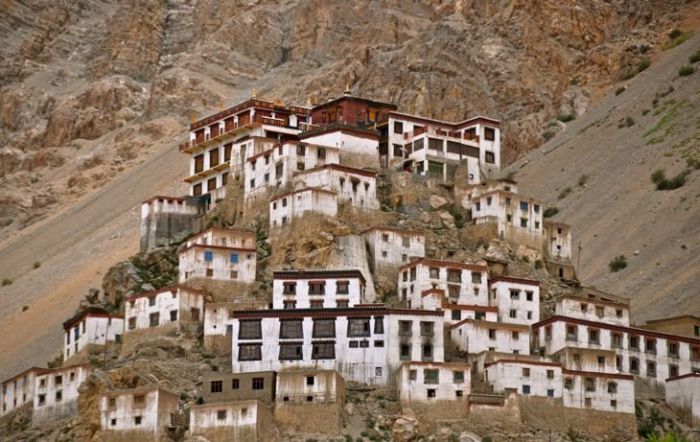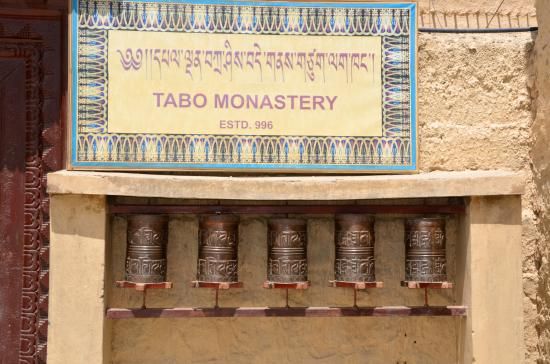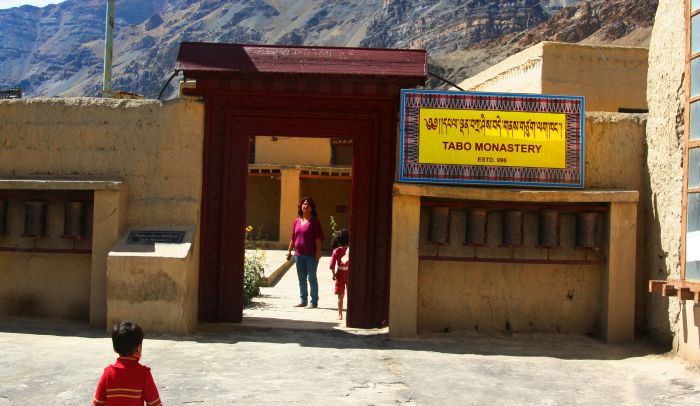
There are some very special locations on the planet whose uniqueness and richness can never be replicated. The Tabo monastery in Spiti valley of Himachal Pradesh is one such place. With a history stretching to over a millennium, Tabo is often referred to as Ajanta of the Himalayas. It was founded in the year 996 A.D, and the year is recorded as Fire Ape in the traditional Tibetan calendar.
Time seems to have left Tabo untouched. Even today it stands solid and proud in its barren, rocky and mountain desert Himalayan terrain. At an altitude of 3050 meters, the monastery is truly an architectural marvel. It seems to dwell in a slice of heaven of its own. The tribulations of modern society have failed to touch it. Tabo continues to preserve a culture, tradition and heritage of Buddhism that has survived through the centuries.
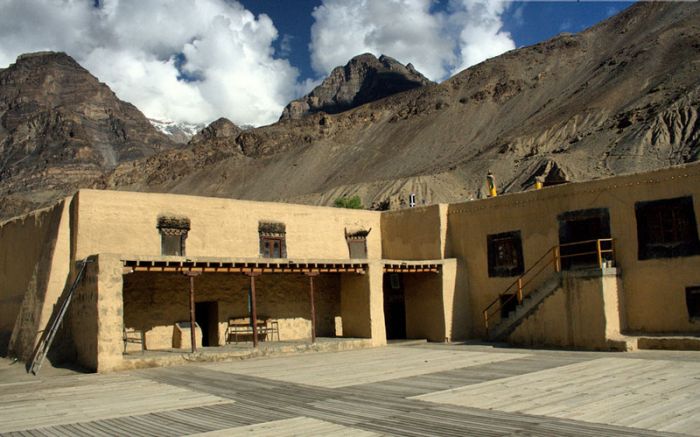
The Tabo Gompa, as the monastery is called, is believed to have been founded by Lotsawa Rinchen Tsang Po also known as Lha Lama Yeshe O’d and Mahaguru Ratnabhadra. He was considered to be one of the greatest teachers of Mahayana Buddhism, instrumental in spreading the faith into Tibet and the Western Himalayas.
Tabo has been declared a national treasure and is a protected monument under the aegis of Archaeological Survey of India (ASI).
The monastery is located on the left bank of a quiet flowing River Spiti. Built like a small fortress, the high mud and brick walls that surrounds this sacred monument did help to ward of invasions when marauders came around to loot its timeless treasures. With support from Archaeological Survey of India, His Holiness the Dalai Lama and a regular line of abbots restoration and preservation works have been carried out at this seat of spirituality in the Himalayas.
In all the monastery has 9 temples and 23 Chortens and chambers for housing resident monks and their young pupils. Close to the old Buddhist temple, a new Du-kang or assembly hall was constructed in 1983 that is used for holding daily congregations.
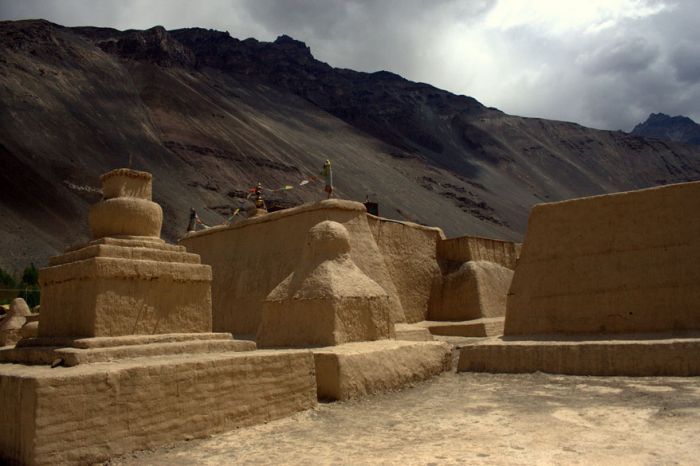
The nearby Bodhisattva Maitreya Temple with a centuries old assembly hall and a core sanctum is one of the most sacred Buddhist structures in the Himalayas. Facing the assembly hall is a large four-sided (over 6 meters tall) statue of Buddha sitting in a meditative posture. The deity is revered as one of the sons of Adibuddha, who is believed to be the primordial Buddha. This larger than life statue facing in all four directions is considered to portray the turning wheel of law in a life cycle.
On the walls of the hall are brackets with flaming circles and stucco images that are referred to as the Vajradhatu Mandal. The 30 projecting deities in stucco cast are collectively revered as the ‘Soul of the Thunderbolt’ or the Vajrasattva. Wall paintings in the sanctum have a uniquely western Himalayan styling as the artists who painted them are believed to have come from Ladakh. Tabo has a priceless collection of religious paintings called Thangka’s, besides the many rare manuscripts in its libraries.
The rarefied climate has preserved many of the wall paintings well, earning it the label of Ajanta of the Himalayas after Ajanta in the Deccan where cave wall paintings have withstood many centuries.
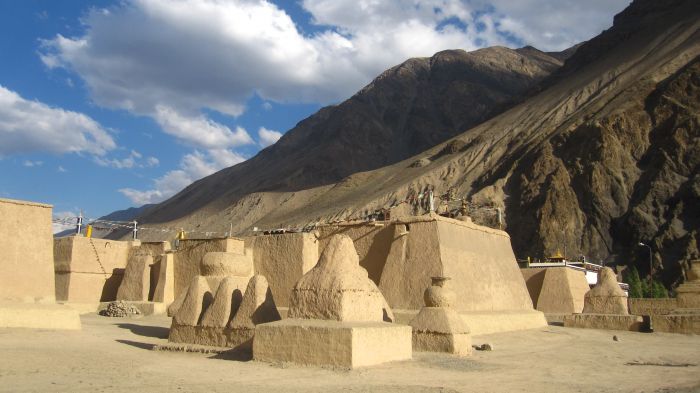
Facing the monastery, on the crags of a hillside are small cave dwelling units that were used by monks of the higher order for deep meditation sessions that stretched from weeks to months. Taking a look at these small caves, where one can barely sit in a crouched position, leaves one wondering about the strength of a human mind when it attempts to achieve the impossible.
The monastery buzzes with activity and many festivals are held regularly. One such is the Chakhar Festival, held once every three years in September and October. It’s a good occasion to witness monks perform the mask dances. The mega Kalchakra religious festival, held in 2009, was inaugurated by His Holiness, the Dalai Lama.
Prayers and rituals at the monastery are held daily, a tradition that has remained unchanged for centuries. The Lamas (monks) rise early to light lamps and incense sticks for preforming their day long tantric rituals. The monastery also houses resident pupil monks, who are initiated into Buddhist traditions.
How to get there:
Reaching Tabo monastery is an adventure in itself as one travels on anyone of the two routes to the place. Accessible from Shimla and Kullu-Manali, Tabo is at a distance of 365 Kms from Shimla and 295 Kms from Kullu.
From Shimla going past Narkanda one descends into Satluj River valley to get to Khab, close to the India-China border. From Khab one takes the upstream road along Spiti River to reach Tabo.
From Kullu, going past Manali and after crossing over Rohtang Pass (this route is closed from November to April-May) a rough road track from Gramphu along River Chandra heads upstream to Kuzum La (Pass). From here one heads downstream along Spiti River to reach Kaza first and then Tabo (33 Kms from Kaza).
